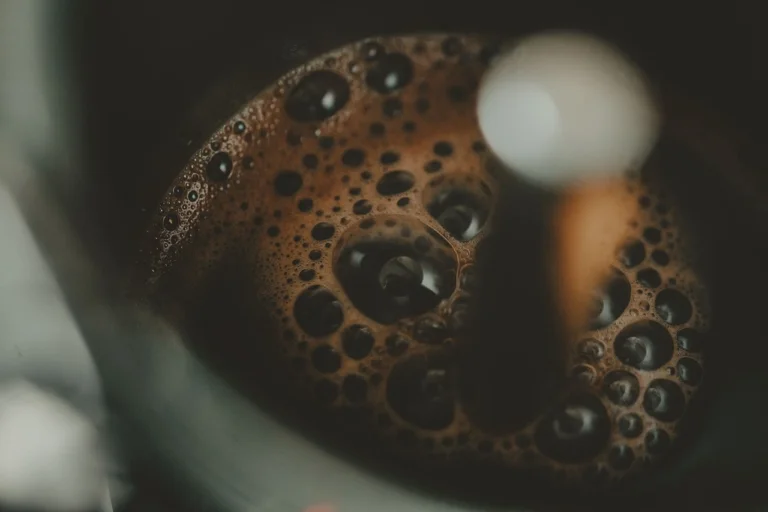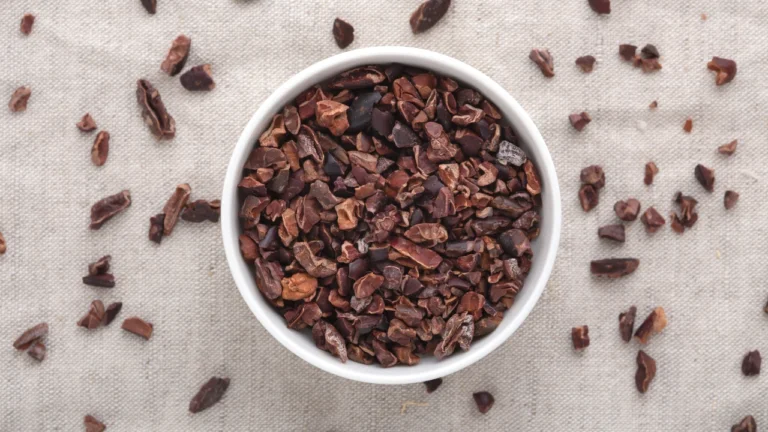To pull the perfect espresso shot you need to have a delicate balance of technique, precision, and passion. This skill can help you a lot to take your coffee experience to new heights.
A perfect shot of espresso isn’t just about pushing water through coffee grounds, it’s about understanding the difference between grind size, pressure, temperature, and timing
What is the Ideal Grind size for Espresso?
The ideal grind size for espresso is fine. It should have a texture similar to table salt or slightly finer. A fine grind allows the correct amount of resistance during the extraction process, which is crucial for creating the rich and concentrated flavor and the characteristic crema of a well-pulled espresso shot.
If the grind is too coarse, the water will flow through too quickly, resulting in a weak and under-extracted shot. If it’s too fine then the water will flow too slowly which will lead to over-extraction and a bitter taste
Step-by-Step Guide to Pulling Perfect Espresso
Here is a step-by-step guide on how to pull the perfect espresso.

Step 01. Preheat Your Equipment
Preheating is very important because espresso requires temperature stability for consistent extraction. Cold equipment can lower the water temperature which can affect the shot’s flavor.
Turn on your espresso machine at least 15-20 minutes before you plan to brew. This gives the machine enough time to heat all its components which includes the group head and internal boiler.
Insert the portafilter into the machine and run a blank shot (without coffee grounds) to preheat it. This helps to maintain the correct temperature during extraction.
Place your espresso cups on the machine’s warming tray or fill them with hot water to preheat. Pour out the water just before using them.
Step 02. Measure and Grind the Coffee
Precision in measurement and grind size is important for getting the right extraction. The grind size affects the flow rate of water through the coffee which in turn influences the flavor.
Use a digital scale to measure out your coffee. For a double espresso shot, you can aim for 18-20 grams of coffee beans. Using the right amount can ensure consistency and balance in the final shot.
Set your grinder to a fine setting similar to the texture of table salt. The grind should be fine enough to provide resistance to the water but not so fine that it clogs the portafilter or causes over-extraction. Grind fresh for each shot as ground coffee begins to lose its aroma and flavor quickly.
Step 03. Distribute and Tamp the Grounds
Proper distribution and tamping are essential to ensure that water flows evenly through the coffee, avoiding channeling, which can lead to an uneven extraction.
After grinding make sure that the coffee grounds are evenly spread in the portafilter basket. You can use your finger or a distribution tool to level the grounds. Even distribution prevents areas of the coffee bed from being under or over-extracted.
Use a flat tamper to compress the coffee grounds with consistent pressure. Aim for about 30 pounds of force. The goal is to create a uniform-level coffee bed that provides the right resistance to the water during extraction. Make sure the tamp is even as an uneven tamp can cause water to flow more quickly through one side of the puck which can lead to channeling.
Step 04. Lock in the Portafilter
A secure fit in the group head is necessary to maintain the pressure needed for proper extraction.
Insert the portafilter into the group head and twist it firmly to the right until it locks in place. It should feel snug but not overly tight. A proper seal is important to build up the 9 bars of pressure needed for espresso.
Step 05. Begin the Extraction
The timing and flow rate during extraction is important to achieve the best and ideal flavor balance in your espresso.
Start the extraction process by engaging the pump. Watch the shot as it begins to pour. The first few drops should appear within 5-7 seconds and then gradually turn into a steady stream. For a double shot, you should aim for a shot volume of 1.5-2 ounces in about 25-30 seconds. This timing can vary depending on your machine and choice but it is a good baseline for most espressos.
Step 06. Observe the Espresso Flow
The appearance of the espresso during extraction provides immediate feedback on whether the grind size, dose, and tamping were correct.
The espresso should flow like warm honey thick and syrupy. If the flow is too fast, the grind might be too coarse or the dose is too low which can result in an under-extracted shot. If the flow is too slow or drips excessively then the grind may be too fine or the dose is too high which can lead to over-extraction.
Look for a rich and golden brown color with a thick crema on top. The crema should be dense and persistent which indicates a good extraction.
Step 07. Stop the Extraction
Stopping the extraction at the right time is important to balance the espresso’s flavors and avoid bitterness or sourness.
Stop the extraction when you reach the desired volume which is 1.5-2 ounces for a double shot. The exact timing depends on your machine and the specific beans you’re using. If your shot pulls too quickly then consider adjusting to a finer grind. If it takes too long, try a coarser grind or reduce the dose.
Step 08. Serve Immediately
Pour the shot directly into a preheated cup. If you’re making a milk-based drink then proceed to steam the milk and combine it with the espresso without delay.
Step 09. Clean the Equipment
Regular cleaning prevents the buildup of coffee oils and residue which can affect the taste of future shots and the longevity of your machine.
After each shot, you should run a small amount of water through the group head to remove any coffee particles.
Remove the portafilter and knock out the spent puck then rinse the basket under hot water. Wipe it dry with a clean cloth before the next use
Regularly backflush your machine with a cleaning solution by following the manufacturer’s guidelines to remove any coffee oils from the group head and valves.
Conclusion
Each step plays an important role in achieving a balanced and flavorful shot. By following this step-by-step guide you can make an espresso that is rich, aromatic, and full of character which sets the foundation for a great coffee experience. By practicing you can refine your technique and you will be able to pull the perfect shot every time.
Frequently Asked Questions
What temperature is best for pulling espresso?
The best temperature for pulling an espresso shot is between 195°F and 205°F (90°C to 96°C). This range can ensure the proper extraction of the coffee’s flavors. If the water temperature is too low then the espresso may taste sour and under-extracted. If it’s too high then the espresso could become bitter and over-extracted.
Many baristas aim for a sweet spot around 200°F (93°C) but the exact temperature can vary slightly depending on the coffee beans and personal preferences
What is the Ideal Espresso Shot Duration?
For a well-balanced espresso shot, aim for an extraction time of 25 to 30 seconds. This duration allows for the perfect blend of flavors and helps to get the right amount of crema. If your shot is too short then it may be under-extracted and sour but if it’s too long then it may become bitter.
Should a Good Espresso Have Golden Crema?
A good espresso should feature a rich and golden crema that covers the entire surface of the shot. This crema layer is crucial as it indicates freshness and the quality of the extraction. It should make up about 10-15% of the espresso shot and provide a creamy texture and complex flavors.
What Should be the Ideal Pressure for Espresso Extraction?
Espresso should be extracted at 9 bars of pressure. This pressure is crucial for forcing hot water through the finely ground coffee which ensures the proper extraction of flavors and the formation of a rich crema. Consistent pressure helps in achieving a balanced and flavorful espresso shot.
How to Enhance Crema in Espresso?
To get more crema in your espresso you should focus on using freshly roasted beans because older beans may not produce as much crema. Adjusting the grind size to be finer and slightly increasing the coffee dose can also help improve crema quality. Consistency in these factors leads to better crema and a more enjoyable espresso experience.



